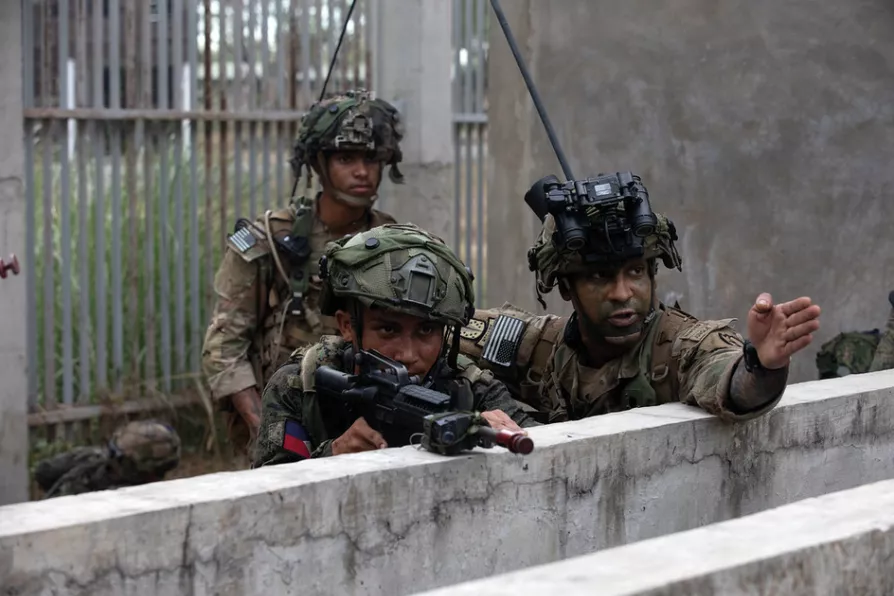
 CALLING THE SHOTS: A Philippine army soldier is coached by a US army captain during training, April 2022
[US Indo-Pacific Command/ Creative Commons]
CALLING THE SHOTS: A Philippine army soldier is coached by a US army captain during training, April 2022
[US Indo-Pacific Command/ Creative Commons]
THE armed forces of the US, the Philippines, and several of their allies started a massive military exercise in the Philippines on Tuesday October 15, amid growing concerns of rising external intervention and possibility of conflict in the Asia-Pacific region.
The joint military drill named Kamandang will continue until October 25. It will involve over 2,300 armed personnel, mostly from the US and the Philippines, with their allies Japan, South Korea, Australia and Britain contributing smaller numbers. It coincides with a massive naval exercise involving the same set of countries at northern Luzon Island in the Philippines, Reuters reported.
Though the countries participating in the exercise denied it was targeted at any particular country and claimed it is a defensive annual event, in the context of growing US interventions in the region targeting China, rising tensions between China and the Philippines due to disputes over islands in the South China Sea, and the recent collision of Chinese and Filipino naval vessels in the region, the basic objectives of the exercise are under scrutiny.

From 35,000 troops in Talisman Sabre war games to HMS Spey provocations in the Taiwan Strait, Labour continues Tory militarisation — all while claiming to uphold ‘one China’ diplomatic agreements from 1972, reports KENNY COYLE

In the first half of a two-part article, PETER MERTENS looks at how Nato’s €800 billion ‘Readiness 2030’ plan serves Washington’s pivot to the Pacific, forcing Europeans to dismantle social security and slash pensions to fund it












